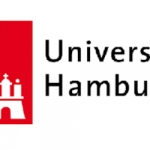Researchers propose a simpler design for quantum computers

(Phys.org) Stanford University researchers have proposed a simpler design for photonic quantum computers using readily available components, according to a paper published Nov. 29 in Optica. Their proposed design uses a laser to manipulate a single atom that in turn, can modify the state of the photons via a phenomenon called “quantum teleportation.” The atom can be reset and reused for many quantum gates, eliminating the need to build multiple distinct physical gates, vastly reducing the complexity of building a quantum computer.
This remarkably simple design requires only a few pieces of equipment: A fiber optic cable, a beam splitter, a pair of optical switches and an optical cavity.
Fortunately, these components already exist and are even commercially available. They’re also continually being refined since they’re currently used in applications other than quantum computing. For example, telecommunications companies have been working to improve fiber optic cables and optical switches for years.
The scientists’ design consists of two main sections: A storage ring and a scattering unit. The storage ring, which functions similarly to memory in a regular computer, is a fiber optic loop holding multiple photons that travel around the ring. Analogous to bits that store information in a classical computer, in this system, each photon represents a quantum bit, or “qubit.” The photon’s direction of travel around the storage ring determines the value of the qubit, which like a bit, can be 0 or 1.
he researchers can manipulate a photon by directing it from the storage ring into the scattering unit, where it travels to a cavity containing a single atom. The photon then interacts with the atom, causing the two to become “entangled,” a quantum phenomenon whereby two particles can influence one another even across great distances. Then, the photon returns to the storage ring, and a laser alters the state of the atom. Because the atom and the photon are entangled, manipulating the atom also influences the state of its paired photon.
Because any quantum logic gate can be compiled into a sequence of operations performed on the atom, you can, in principle, run any quantum program of any size using only one controllable atomic qubit. To run a program, the code is translated into a sequence of operations that direct the photons into the scattering unit and manipulate the atomic qubit. Because you can control the way the atom and photons interact, the same device can run many different quantum programs.
“For many photonic quantum computers, the gates are physical structures that photons pass through, so if you want to change the program that’s running, it often involves physically reconfiguring the hardware,” Bartlett said. “Whereas in this case, you don’t need to change the hardware—you just need to give the machine a different set of instructions.”



















